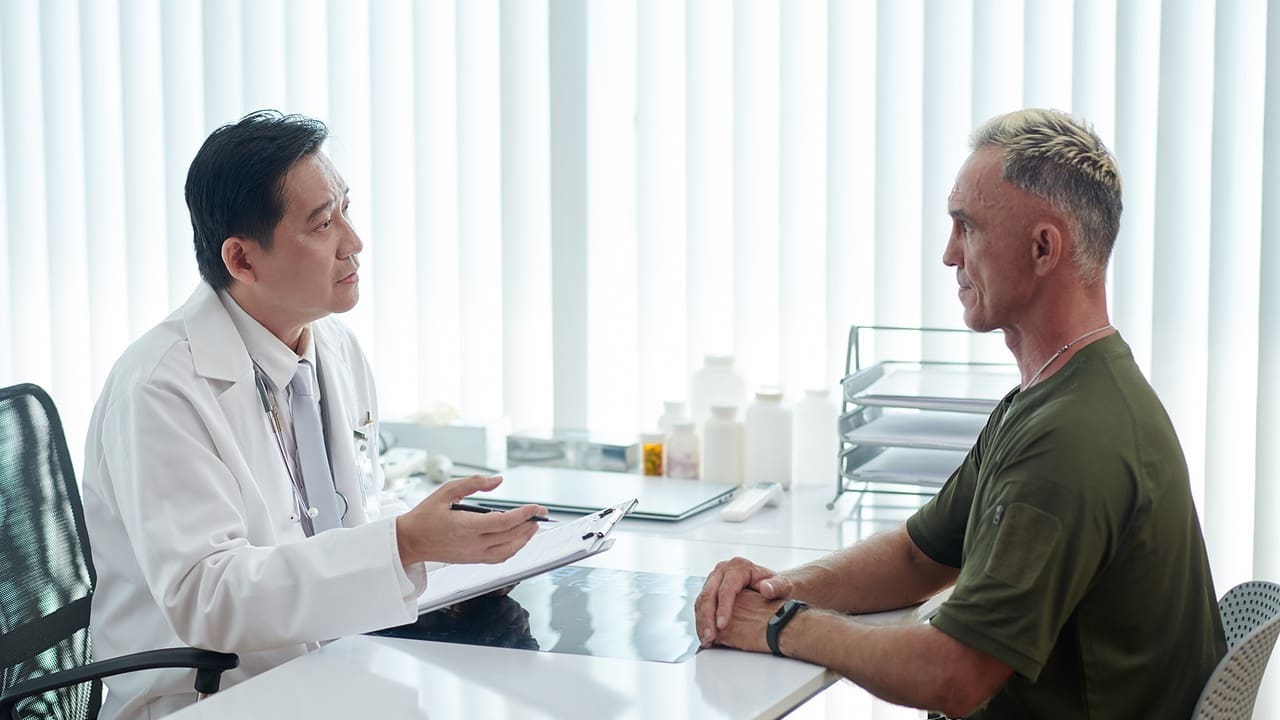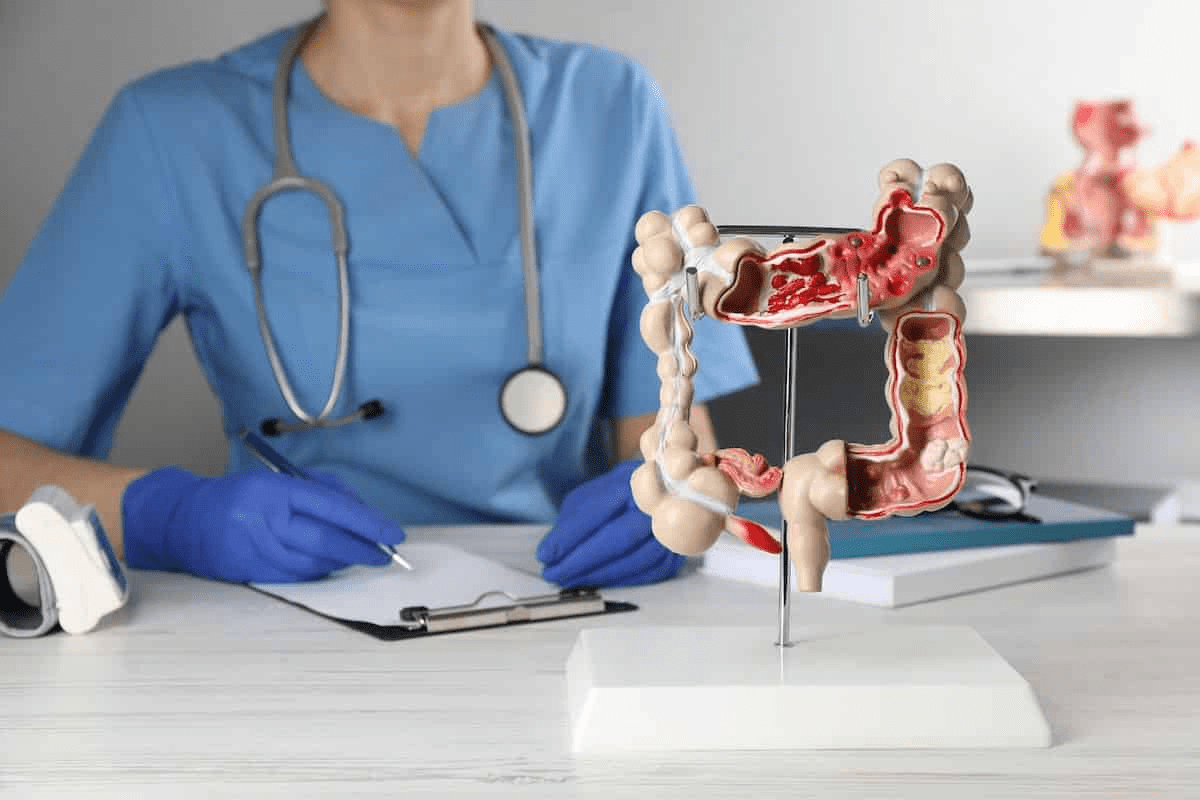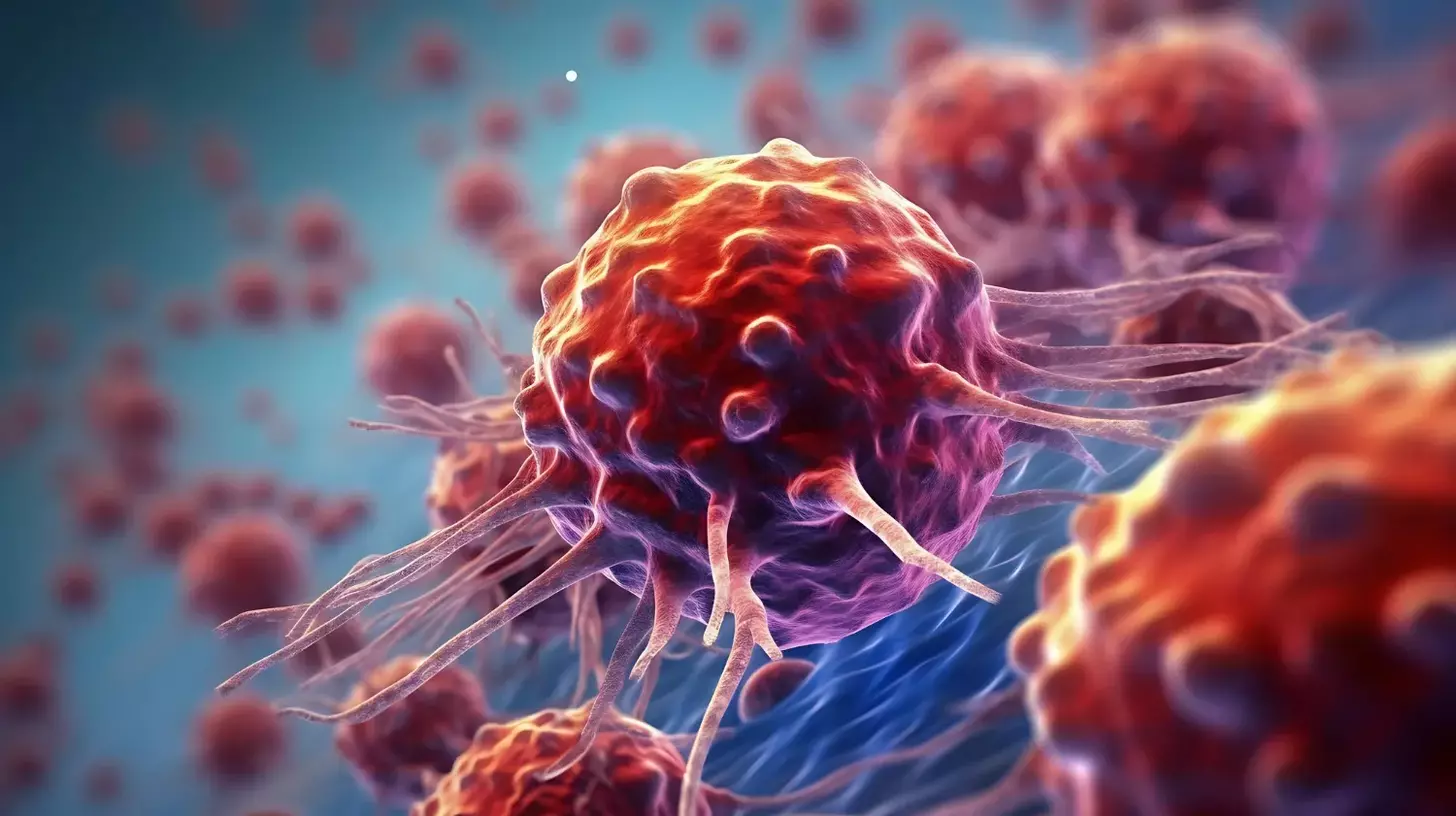Last Updated on November 26, 2025 by Bilal Hasdemir

At Liv Hospital, we know how vital effective prostate cancer management is. Hormone therapy, or androgen deprivation therapy (ADT), plays a key role in treating prostate cancer. -Dr. a Urologic Oncologist at Stanford Health Care, says ADT is essential in modern prostate cancer care.
We understand that ADT medications work to lower or block androgens. These hormones fuel prostate cancer growth. By learning about ADT, drugs, and injections, we can see how this treatment approach helps patients.
Key Takeaways
- ADT is a critical component of prostate cancer management.
- Hormone therapy drugs are designed to reduce androgen levels or block their action.
- Injections are a common method of administering ADT.
- Effective ADT can significantly improve patient outcomes.
- Liv Hospital is committed to providing advanced, patient-centered care.
Understanding Prostate Cancer and the Role of Androgens
Understanding androgens in prostate cancer is key to effective treatment. Prostate cancer is a complex disease influenced by hormones. Androgens, like testosterone, are important for prostate cell growth.
How Androgens Drive Prostate Cancer Growth
Androgens fuel prostate cancer growth by binding to androgen receptors. This binding promotes cancer cell growth. Research shows androgens are vital for prostate cancer progression (Source: Stanford Health Care).
The Biological Basis for Hormone Therapy
Hormone therapy for prostate cancer aims to lower androgen levels. This slows prostate cancer cell growth. It’s based on androgens fueling cancer growth.
Testosterone and Prostate Cancer Progression
Testosterone is a major androgen in prostate cancer. High levels can make cancer cells grow. So, therapies targeting testosterone are key in managing prostate cancer.
Understanding androgens’ role in prostate cancer growth is vital. It shows why hormone therapy is important in managing prostate cancer.
What is Hormone Treatment for Prostate Cancer?
The main goal of hormone therapy for prostate cancer is to lower male hormones, or androgens. These hormones help cancer grow. The treatment, known as androgen deprivation therapy (ADT), aims to cut down androgen production or activity.
Definition and Basic Principles
Hormone therapy for prostate cancer works by targeting androgens, like testosterone. These hormones make prostate cancer cells grow. By lowering androgen levels or blocking their effects, therapy can slow or stop cancer growth.
Goals of Hormone Therapy in Prostate Cancer Management
The main goals of hormone therapy are to:
- Reduce androgen levels in the body
- Block androgens’ action on prostate cancer cells
- Slow down or stop cancer growth
For more detailed information on hormone therapy, visit cancer.ca. It offers in-depth resources on prostate cancer treatment options.
Types of Endocrine Therapy for Prostate Cancer
Several hormone therapies are used to treat prostate cancer, including:
- LHRH agonists and antagonists, which lower androgen production
- Anti-androgens, which block androgens’ action on cancer cells
These treatments can be used alone or together, based on the cancer’s stage and severity.
Androgen Deprivation Therapy (ADT): The Cornerstone Treatment
ADT is a key treatment for prostate cancer. It stops cancer cells from growing by cutting off their need for androgens. Androgen Deprivation Therapy, or ADT, lowers male hormones in the body.
ADT Therapy Meaning and Mechanism
ADT works by making testosterone levels as low as castration. This is important because testosterone helps prostate cancer cells grow. By lowering testosterone, ADT slows or stops these cells from growing.
Achieving Castrate Levels of Testosterone
The goal of ADT is to get testosterone levels below 50 ng/dL. Keeping these levels low is key to managing prostate cancer effectively.
Medical vs. Surgical ADT Approaches
There are two main ways to do ADT: medical and surgical. Medical ADT uses drugs to lower testosterone. Surgical ADT removes the testes through orchiectomy.
What is ADT in Prostate Cancer Management?
ADT is used in prostate cancer at different stages. This includes advanced or metastatic disease, and sometimes with other treatments like radiation therapy.
| ADT Approach | Method | Key Characteristics |
|---|---|---|
| Medical ADT | Use of LHRH agonists or antagonists | Reversible, adjustable |
| Surgical ADT | Orchiectomy | Irreversible, immediate effect |
It’s important for patients and doctors to understand ADT well. Knowing how ADT works, its benefits, and its downsides helps in choosing the right treatment.
Types of Prostate Cancer Hormone Therapy Drugs
Hormone therapy is key in fighting prostate cancer. It’s important to know about the different hormone therapy drugs. These drugs either lower male hormone levels or block their effect on cancer cells.
LHRH Agonist Examples: Leuprolide, Goserelin, and Others
LHRH agonists first increase testosterone levels. But, with ongoing use, they lower testosterone to very low levels. Examples include:
- Leuprolide: Available in various forms, like monthly or every 3, 4, or 6 months injections.
- Goserelin: Usually given as an implant every 1 or 3 months.
- Triptorelin: Given as an injection every month or every 3 months.
LHRH Antagonists: How They Differ
LHRH antagonists block LHRH directly, quickly lowering testosterone. This class includes:
- Degarelix: Administered via injection monthly.
- Relugolix: Given orally once daily.
These drugs quickly lower testosterone levels. They might be better for patients with urgent needs, like spinal cord compression or severe urinary issues.
Anti-Androgens and Their Role
Anti-androgens block androgens’ effect on cancer cells. They’re often used with LHRH drugs for better treatment.
First-Generation Anti-Androgens
First-generation anti-androgens include flutamide, bicalutamide, and nilutamide. They’ve been used for years and block androgen receptors well.
Second-Generation Anti-Androgens
Second-generation anti-androgens, like enzalutamide and apalutamide, were developed later. They work better and are used in many prostate cancer treatments, even in advanced cases.
Knowing about hormone therapy drugs is key for prostate cancer treatment. Each drug works differently, with its own benefits and side effects. This helps doctors create treatment plans that fit each patient’s needs.
Administration Methods: Prostate Cancer Injections Every 6 Months
Long-acting hormone therapy drugs are changing prostate cancer treatment. These drugs make treatment easier and better for patients.
ADT Hormone Shots for Prostate Cancer
ADT hormone shots are a common treatment for prostate cancer. They contain LHRH agonists or antagonists. These drugs lower testosterone levels in the body.
Long-Acting Formulations and Their Benefits
Long-acting ADT drugs have changed prostate cancer treatment. They allow for injections every 6 months. This means fewer clinic visits and better treatment results.
The benefits include reduced treatment burden, improved quality of life, and potentially better treatment outcomes.
| Formulation Type | Injection Frequency | Benefits |
|---|---|---|
| Short-Acting | Monthly or Every 3 Months | More frequent clinic visits, more side effects |
| Long-Acting | Every 6 Months | Less frequent injections, better patient compliance |
What to Expect During Treatment Administration
During treatment, patients get regular checks and blood tests. It’s important to follow your treatment plan and talk to your doctor about any concerns.
Monitoring During Androgen Deprivation Therapy
Monitoring during ADT includes regular check-ups and blood tests. Imaging studies might also be needed. This close monitoring helps ensure the best treatment outcomes for patients.
When is Hormone Treatment for Prostate Cancer Recommended?
Hormone treatment for prostate cancer is a key treatment option. It’s chosen based on the cancer’s stage and grade, and the patient’s wishes.
Advanced or Metastatic Disease
For advanced or metastatic prostate cancer, hormone therapy is often the first choice. Androgen deprivation therapy (ADT) lowers testosterone, slowing cancer growth. We suggest ADT for men with metastatic disease to improve survival and quality of life.
Recurrent Prostate Cancer
When prostate cancer comes back after treatment, hormone therapy might be recommended. We look at the patient’s past treatments and health to decide the best course. Intermittent hormone therapy may be used to lessen side effects while controlling cancer.
Neoadjuvant and Adjuvant Settings
Hormone therapy is also used before and after main treatments. Neoadjuvant therapy is given before, like before radiation, to shrink the tumor. Adjuvant therapy is after, to lower the chance of cancer coming back.
| Setting | Purpose of Hormone Therapy | Typical Duration |
|---|---|---|
| Neoadjuvant | Shrink tumor before primary treatment | 3-6 months |
| Adjuvant | Reduce risk of recurrence after primary treatment | 6 months to several years |
Intermittent vs. Continuous Therapy Approaches
Choosing between intermittent and continuous hormone therapy depends on several factors. Intermittent therapy stops and starts hormone treatment based on PSA levels and symptoms. This can lessen side effects and enhance quality of life.
We assess each patient’s situation to pick the best hormone treatment plan. We consider the cancer stage, patient health, and preferences.
Combination Approaches in ADT and Prostate Cancer Management
Using Androgen Deprivation Therapy (ADT) with other treatments is key in fighting prostate cancer. This method creates a detailed plan to tackle the disease from different sides.
ADT with Radiation Therapy
ADT paired with radiation therapy is a common strategy. Research shows it boosts results for patients with early or growing prostate cancer. This combo makes treatment more powerful, controlling the disease better and cutting down on coming back.
ADT with Chemotherapy
For advanced prostate cancer, ADT is often mixed with chemotherapy. This mix slows down the disease and makes life better. It works by hitting cancer cells in different ways, making treatment stronger.
Novel Combination Strategies
Scientists are always looking for new ways to make ADT better. They’re testing ADT with new drugs that target prostate cancer’s growth paths.
Enhancing Effectiveness of Androgen Deprivation
- Improving patient selection for combination therapies
- Optimizing treatment sequencing and duration
- Investigating new agents to combine with ADT
Combining treatments lets doctors tailor care for each patient. As research grows, we’ll see better ways to fight prostate cancer together.
Resistance Mechanisms and Current Research in Hormone Therapy
Hormone therapy has changed how we treat prostate cancer. But, resistance is a big problem. We need to understand and fight resistance to make treatments better.
Understanding Treatment Resistance
Prostate cancer can stop working with hormone therapy. This is called treatment resistance. It happens when cancer cells change in ways that make them hard to treat.
Many things can cause this resistance. These include genetic changes, changes in the androgen receptor pathway, and changes in the tumor environment.
“The development of resistance to androgen deprivation therapy is a complex process involving multiple molecular alterations.”
Androgen Receptor Pathway Adaptations
The androgen receptor pathway is key in prostate cancer. Changes in this pathway help cancer cells resist hormone therapy. These changes can make cancer cells more sensitive to androgens or less sensitive to anti-androgens.
Emerging Approaches to Overcome Resistance
Researchers are looking at new ways to beat resistance. They’re working on new anti-androgens, targeting other pathways, and exploring immunotherapy. These new methods aim to help hormone therapy work better.
- Novel anti-androgens
- Targeting alternative pathways
- Immunotherapy approaches
Future Directions in Prostate ADT Research
Future research will focus on personalized medicine and combination therapies. They aim to target multiple resistance mechanisms at once. Studying the tumor microenvironment will also be key.
| Research Area | Potential Impact |
|---|---|
| Personalized medicine | Tailored treatment based on tumor characteristics |
| Combination therapies | Simultaneous targeting of multiple resistance mechanisms |
| Tumor microenvironment studies | Better understanding of resistance mechanisms |
By tackling the complex issues of resistance, we can make hormone therapy more effective. This will help more prostate cancer patients.
Conclusion: Living with Hormone Treatment for Prostate Cancer
Hormone treatment for prostate cancer is complex and key in managing the disease. It helps patients understand how androgens fuel cancer growth and the treatment options available. This knowledge helps patients navigate their care better.
Living with hormone treatment for prostate cancer means weighing treatment benefits against side effects. We’ve looked at hormone therapy types like Androgen Deprivation Therapy (ADT) and anti-androgens. We’ve also discussed how these treatments are given, like injections every 6 months.
Patients must work closely with their healthcare team during hormone treatment. This ensures their treatment plan is adjusted as needed. By doing this, they can improve their quality of life and manage their disease effectively. As research advances, new treatments will offer hope for better outcomes and a brighter future for those with prostate cancer.
FAQ
What is hormone treatment for prostate cancer?
Hormone treatment for prostate cancer is also known as androgen deprivation therapy (ADT). It aims to lower androgen production to slow cancer growth.
How does ADT work in prostate cancer management?
ADT lowers or blocks androgens like testosterone. These hormones drive prostate cancer growth and progression.
What are the different types of hormone therapy for prostate cancer?
There are many types of hormone therapy for prostate cancer. These include medical and surgical approaches like LHRH agonists, LHRH antagonists, and anti-androgens.
What are LHRH agonist examples used in prostate cancer treatment?
Examples of LHRH agonists include leuprolide and goserelin. They work by stimulating LHRH production to lower testosterone.
How often are prostate cancer injections administered?
Prostate cancer injections, like long-acting hormone therapy drugs, are given every 6 months. This reduces the need for frequent injections and improves patient compliance.
When is hormone treatment for prostate cancer recommended?
Hormone treatment is recommended for advanced or metastatic disease, recurrent cancer, and in neoadjuvant and adjuvant settings.
Can hormone therapy be used in combination with other treatments?
Yes, ADT is often combined with other treatments like radiation and chemotherapy. This combination enhances its effectiveness in managing prostate cancer.
What are the challenges associated with hormone therapy for prostate cancer?
A major challenge is treatment resistance, including hormone therapy. Understanding resistance mechanisms is key to developing effective strategies.
What is the role of anti-androgens in hormone therapy for prostate cancer?
Anti-androgens are vital in hormone therapy. They block androgens like testosterone to slow cancer growth.
What are the benefits of long-acting formulations of hormone therapy drugs?
Long-acting formulations offer several benefits. They reduce the need for frequent injections and improve patient compliance, making treatment more manageable.
References
- Canadian Cancer Society: https://cancer.ca/en/cancer-information/cancer-types/prostate/treatment/hormone-therapy
- American Cancer Society (ACS): https://www.cancer.org/cancer/types/prostate-cancer/treating/hormone-therapy.html
- National Cancer Institute (NCI): https://www.cancer.gov/types/prostate/prostate-hormone-therapy-fact-sheet
- Cancer Research UK: https://www.cancerresearchuk.org/about-cancer/prostate-cancer/treatment/hormone-therapy
- Stanford Health Care: https://stanfordhealthcare.org/medical-treatments/h/hormone-therapy-prostate-cancer/about-this-treatment/overview.html








